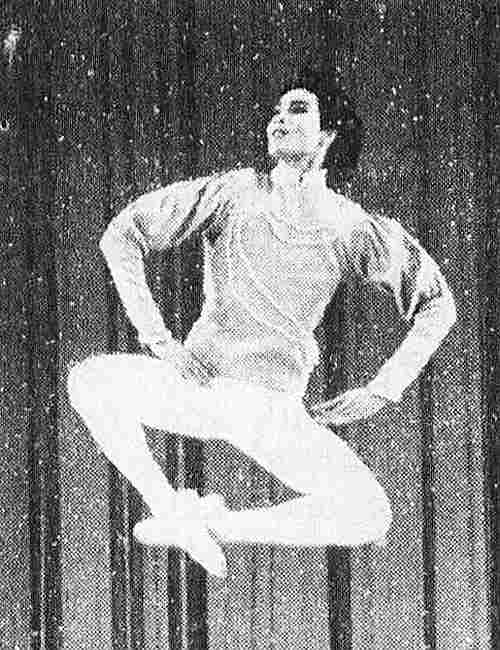|
Zhang, who was born in the eastern Chinese city of Suzhou, loved swimming, football and the long jump as a boy. In 1973 at the age of 12, he was selected from among several hundreds of school children to receive ballet training at the Beijing School of Dance. In his third year at the school, Zhang had an opportunity to see a performance of the Japanese Matsuyama Ballet Company. The company's principal dancers, Yoko Morishita and Tetsutaro Shimizu, entranced the boy with their grace and skill. When he learnt Shimizu had begun his ballet training in China in the 1960s when he was 17 years old, Zhang was inspired to emulate him.
 |
|
New Year's Sacrifice (XU XIANGJUN) |
In 1979, after his sixth year at the ballet school, Zhang graduated with high honours and joined the Central Ballet. In 1980 Ben Stevenson selected Zhang for advanced training at the Houston Ballet, where he was frequently invited to appear on stage as guest performer.
Participating in the 1982 international ballet competition in Jackson, Mississippi, Zhang danced the role of the prince in the pas de deux with the black swan in Swan Lake, and unexpectedly came out among the leaders in the first round.
 |
|
Dancer Zhang Weiqiang (XU XIANGJUN) |
In the second round, which required a performance of a modern work, Zhang danced a Chinese solo work, Sea Waves, a simple, lively and romantic piece. Although his performance was acclaimed by the audience, the choreography was faulted for lacking depth and strength. Zhang's ranking fell suddenly to seventh place.
For the following round, Zhang had prepared The Golden Deer, a work based on Chinese-style dance. The piece's choreography emphasized expressive arm and eye movements, posture and romantic charm, and its performance required subtlety and delicacy. However, from his experience in the previous round, Zhang knew Golden Deer lacked the strength and speed traditionally required of ballets. Therefore, with the guidance of his teacher, he changed the entire appearance of the work in one day to showcase his pas de élévation. Zhang's achievement in Goledn Deer greatly impressed the audience and panel of strict judges, and he went on to win the highest marks in the final round with his performance in a pas de deux from Sleeping Beauty.
|
